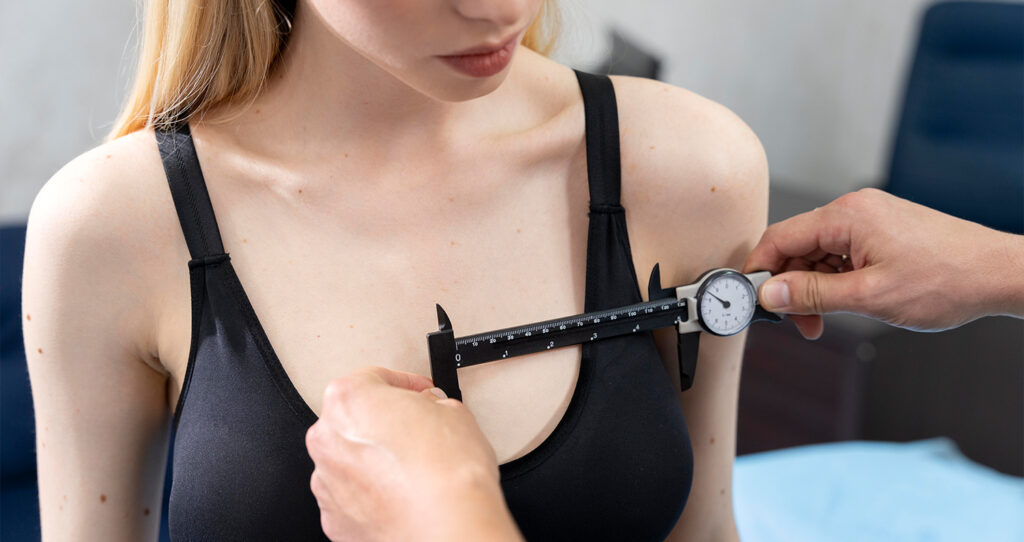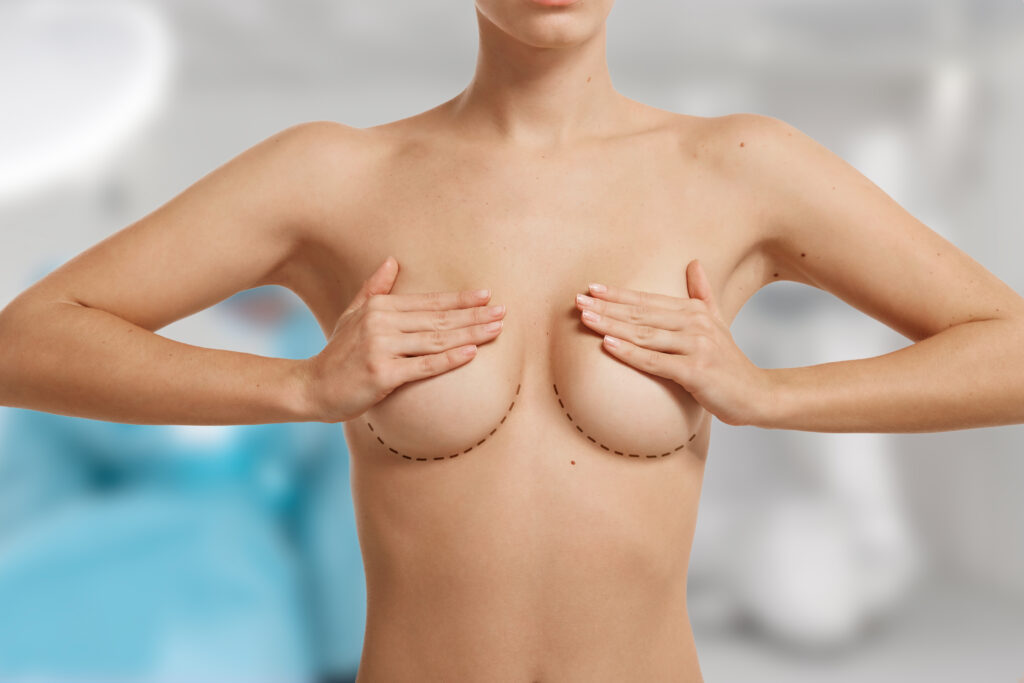The media often portray breast surgery as a cosmetic procedure intended to meet certain beauty standards for women. But in reality, breast plastic surgery is much more than that. It’s about a woman’s comfort in any form.
With age, women’s breasts eventually lose their elasticity. Women can also face challenges such as congenital asymmetry or the aftermath of breast cancer treatment. But with the help of breast surgery, women can restore, improve, or change their breasts as much as women can feel comfortable with their bodies.
In this article, with the help of Dr. Alexandre Charão, we will provide you with an overview of breast augmentation. We’ll delve into who might be the best candidate for this procedure, explore the details of the surgery, and discuss the potential risks and expected results.
What is Breast Augmentation?
When thinking about plastic surgery, breast surgery, namely breast augmentation, comes to mind first. Many studies show that this type of surgery is the most common worldwide. Breast shape surgery allows women to improve the shape and size of their breasts to achieve the desired body proportion and boost their self-confidence.
Traditionally, breast augmentation was seen only as a way to enhance attractiveness. Yet, a recent 2022 study points to a shift in priorities, showing a growing trend toward breast lifts (mastopexy) and reductions [1]. Such a change in priorities suggests that more and more women choose to strive for comfort and well-being rather than just beauty.
As Dr. Charão mentioned, “My goal is to help patients achieve a better sense of self-esteem. As a doctor, I’m not concerned about beauty standards. What matters most to me is that my patients feel comfortable and confident, whether it’s at the beach, looking in the mirror, or feeling comfortable with a partner.”
Best Candidates For Breast Augmentation
Women considering breast implant surgery come from diverse backgrounds and have various motivations. “In 90% of my cases, women who undergo breast augmentation surgery do so for personal reasons. The remaining 10% of cases involve restoration and MTF transition,” highlighted Dr. Charão.
To sum it up, breast augmentation surgery is used for such cases as:
- A personal preference for aesthetics
- Restoration after weight loss or pregnancy
- Addressing a congenital deformity when one breast is uneven from birth (breast asymmetry)
- An MTF transition stage for transgender women
- Restoration after breast cancer
While breast augmentation can add volume, it doesn’t address severe sagging. In these cases, another type of breast surgery might be a more suitable solution, which is a breast lift.
“Breast augmentation isn’t always the best solution for everyone. Sometimes, patients come in for a consultation requesting augmentation, but upon examination, we might find out that they have significant sagging skin and low nipples. So, in that case, what they need is a breast lift instead of augmentation.”
— Dr. Alexandre Charão
Breast Implant Options
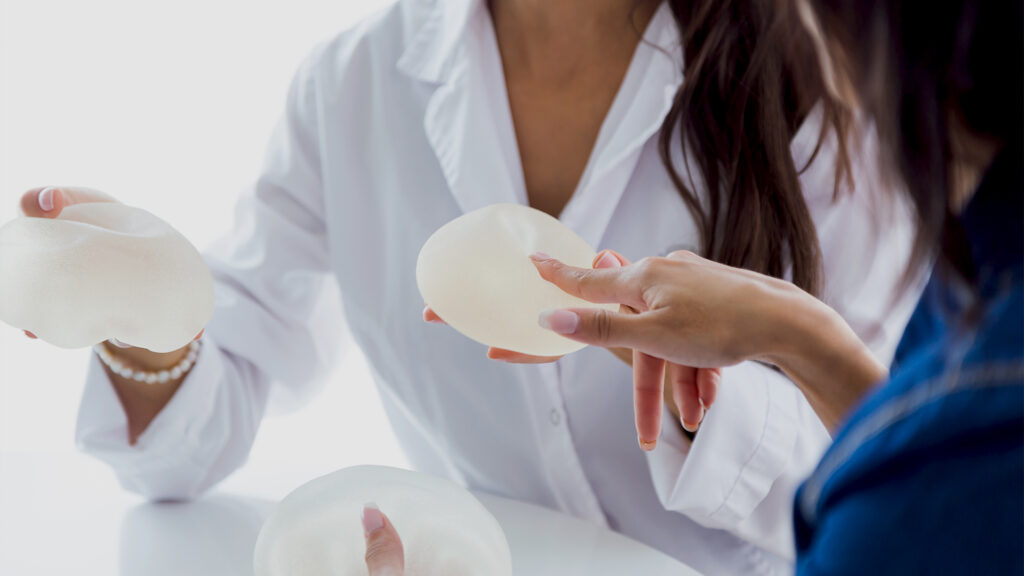
Source: Nensuria from Freepik
The perfect implant depends on factors like the desired outcome, body type, and tissue quality. They are measured in volume (cubic centimeters), but it’s important to understand that there are no guarantees of a specific cup size breast forms after surgery.
Generally, smaller implants (around 150cc to 300cc) are used for women who want a subtle enhancement or to restore balance after weight loss/pregnancy. Medium and larger implants (up to 450cc and over respectively) can create a more dramatic increase in size and fullness.
The surgeon will carefully assess the patient’s chest wall, breast tissue, and skin elasticity during the consultation to determine the ideal implant size that meets their goals and expectations.
✔️ Implant Material
In breast plastic surgery, we have two breast implants to be medically approved.
The first type is a silicone implant. Nowadays, they are considered the safest and most durable option for breast augmentation. They benefit from mimicking the feel of natural breast tissue. However, they have a higher upfront cost and may require an MRI scan in some cases to detect rupture.
Next, we have saline implants. They also contain silicone, but only in the outer shell. It’s filled with a sterile saltwater solution, which might feel less like natural tissue than silicone gel. However, they benefit from their lower cost and the fact that it is easy to detect if the implant ruptures. If a saline implant ruptures, it’s easier to detect because the saltwater will be reabsorbed by the body, causing the implant to deflate.
✔️ Implant shape
During the consultation, the surgeon might bring breast augmentation implant samples to demonstrate their difference. Below you will see a short description of each type.
Round implants, as the name suggests, are just that — round! They have a consistent shape that helps to create a fuller breast shape in the upper part. They are ideal for women who desire a significant volume increase or those with minimal breast tissue.
We might also name them “bikini implants” because a round implant opens up more opportunities for choosing clothes, both regular and swimwear.
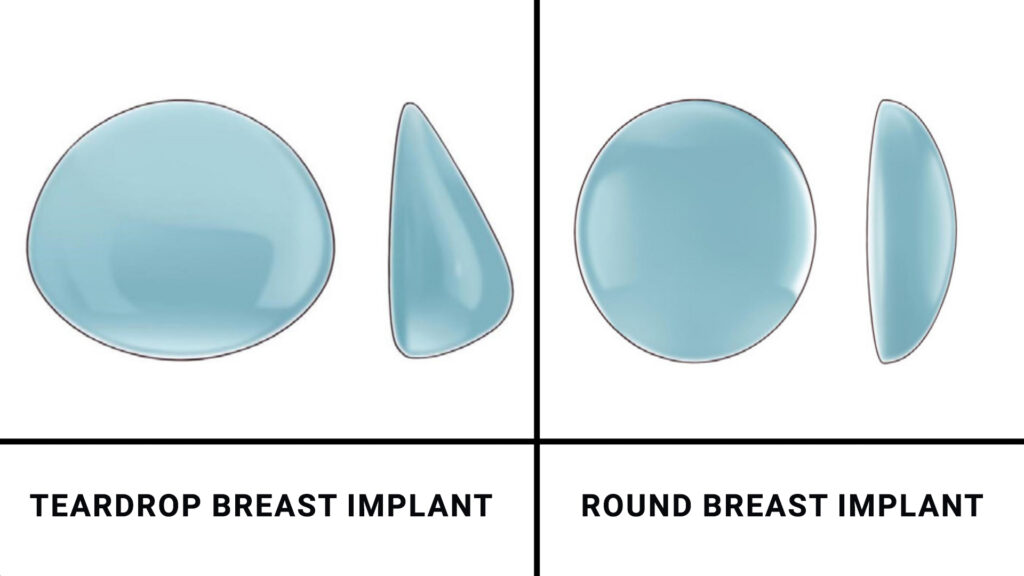
The second type is called a teardrop implant, these have a more rounded top and taper towards the bottom. They are also named “anatomical implants” because they mimic the natural shape of a breast. Anatomical implants are a good choice for women who seek a more natural look [2]. Unlike round implants, these do not emphasize the upper part of the breast.
From Dr. Charão’s experience, “People from North and South America tend to favor round implants for a fuller upper breast, while Europeans often choose teardrop-shaped implants for a more natural look.”
✔️ Implant Texture
Implants come in two texture options: smooth and textured.
Smooth implants offer a more natural feel. The smooth surface allows the implant to move more freely within the breast tissue, potentially offering a more natural look and feel compared to textured implants.
On the other hand, implants with a textured surface adhere better to surrounding skin tissue. It varies depending on the skin’s thinness, potentially reducing the risk of capsular contracture (scar tissue forming around the implant) which is why they have an advantage over smooth implants. However, this texture might be slightly noticeable by touch in some cases.
Stages of Breast Augmentation
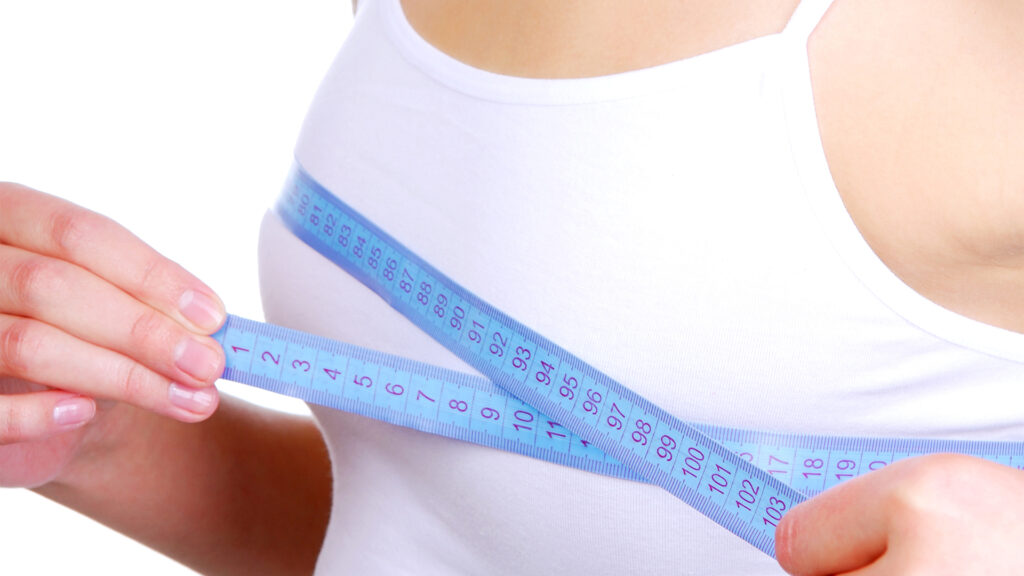
Source: Valuavitaly from Freepik
In this section, we will analyze step by step all the stages of work on breast augmentation, starting from the consultation and ending with post-operative measures.
Pre-Operative Preparation
A successful breast augmentation begins with proper preparation. First, a consultation with a doctor is held to discuss the patient’s needs, medical history, and expectations. After that, the doctor prescribes the necessary referrals to determine that the candidate is suitable for surgery.
To ensure that the candidate is fit for surgery, the doctor will recommend additional tests, such as:
- Blood tests: These assess your overall health and identify any potential risks.
- Mammogram or ultrasound: These imaging studies help detect any abnormalities in the breast tissue.
- Chest X-ray: This can be used to evaluate your overall health and lung function.
The surgeon will also likely recommend stopping smoking, alcohol, and certain medications (like hormonal drugs) two weeks before surgery. This helps optimize healing and minimize complications.
The Surgical Process
The operation itself is quite simple, as shown further, but it requires general anesthesia. After all, breast augmentation surgery is performed on a fairly large area of the body. The surgery itself typically takes up to 2 hours, although this can vary depending on the complexity of the case.
During the consultation, the surgeon will discuss different incision areas, including three options:
- under the breast (inframammary fold);
- around the areola (periareolar);
- in the armpit (axillary).
The surgeon will recommend the most suitable location based on factors like the type of implant, the desired outcome, and scar visibility preferences.
To perform breast augmentation, the surgeon cuts the skin first. Once the incision is made, they carefully make a pocket behind the chest wall muscle or breast tissue, depending on where the implant will go. After that, the chosen implant is placed with meticulous precision so it sits right without disturbing any sensations afterward. In the end, the surgeon will close the incision with surgical glue or small stitches.
After the surgery, breasts are wrapped in a supportive band to help minimize swelling and provide initial support.
Breast Surgery Healing Process

Source: Cottonbro Studio from Pexels
After breast augmentation, the patient spends around 5 hours in a recovery room before going home. Sometimes the patient might as well stay in the hospital overnight. From there, it’s normal to experience some swelling, bruising, and discomfort for the first few weeks.
To help the healing process and reduce swelling, the patient will wear a special bra that holds everything in place and minimizes any movement. Before departing home, the surgeon will provide instructions on how to take care of the wounds, what kind of activities to avoid, and when to follow up.
Full recovery after surgery takes about eight weeks. During this time, all swelling disappears, the scar heals, and the patient adapts to the implant. During the first two weeks, the patient must avoid vigorous activity to avoid disturbing the chest. They should also avoid bending over and jumping to prevent stretching the tissue.
However, some surgeons, including Dr. Alexandre Charão, offer “fast track” or “rapid recovery” techniques that aim to shorten this timeline [3]. According to Dr. Charão, “The patient can move and raise their arms 3 hours after the surgery, and they can go back to the job after three rest days.”
The fast-track breast augmentation recovery involves:
- Minimally invasive surgical techniques
- Specific pain management protocols
- Early mobilization exercises
- Specialized post-operative care
Breast Augmentation Before and After Pictures
Breast augmentation surgery is a lifetime commitment, you need to set realistic expectations. In these images, we offer a visual representation of the difference between round and anatomical breast implants for informational purposes.
These images showcase potential results of breast augmentation, however, results may vary based on factors like body type, implant choice, and healing process.
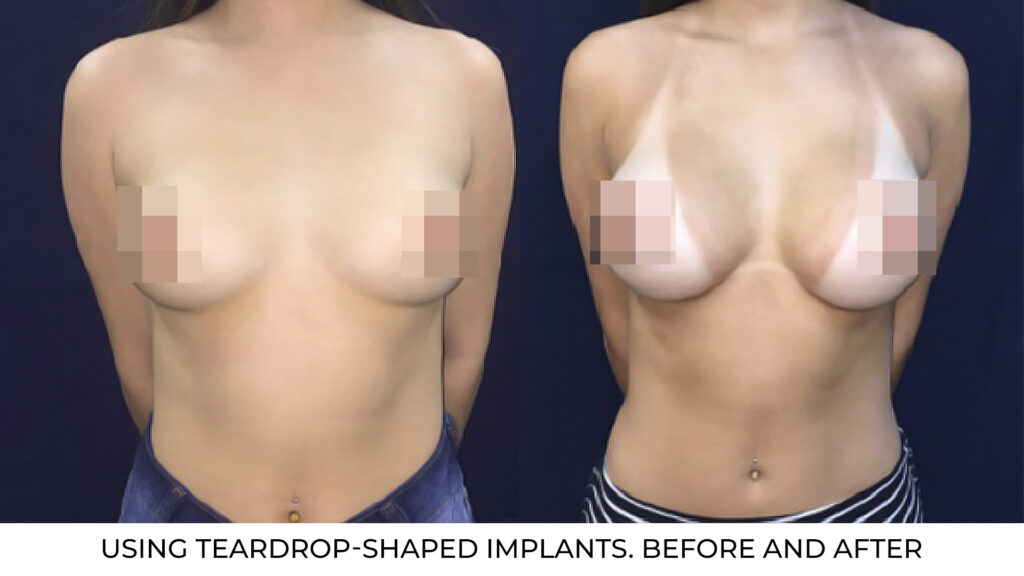
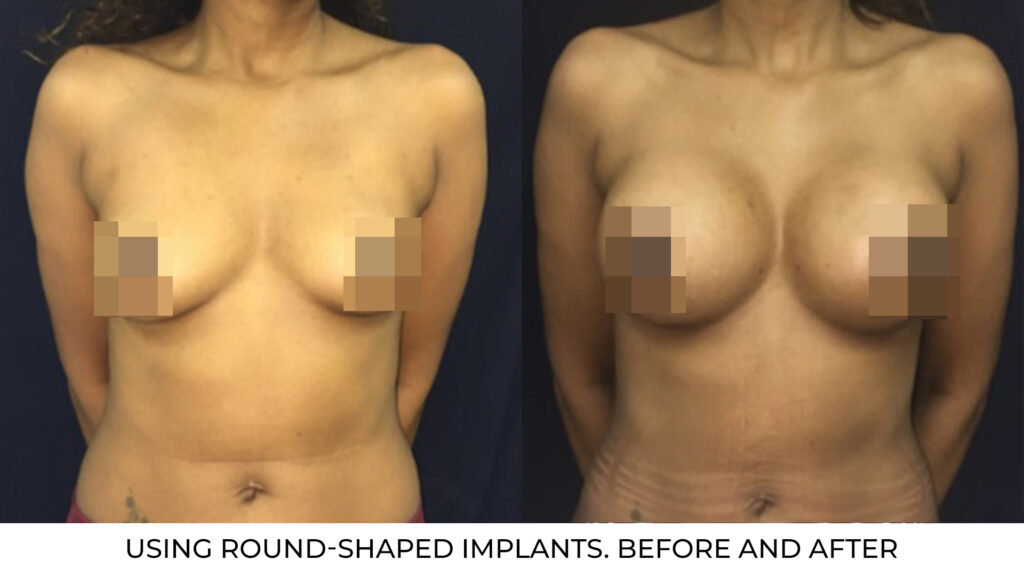
Risks of Breast Augmentation
Modern breast implants are made of hypoallergenic materials and are therefore considered completely safe in the long term. But that doesn’t guarantee that breast augmentation carries no potential risks.
To the list of typical complications, such as anesthesia risks, hematoma, infection, bleeding, and scarring, we can add unique risks associated with breast augmentation [5]. Such complications include:
- implant rupture or leakage
- changes in nipple sensation
- allergic reaction to implant materials
- capsular contracture, a complication where scar tissue tightens around the implant, causing the breast to feel hard and potentially distorted
Most of these risks can be easily avoided with high-quality implants, adherence to the standards of preparation for surgery, honesty in medical history at the consultation, and the qualifications of the board-certified plastic surgeon.
Cost of Breast Augmentation

Source: Valuavitaly from Freepik
Breast augmentation is not a one-time permanent solution. As time goes by, patients may need revision surgery, and it’s important to be prepared financially for this.
Today’s implants hold a great breast augmentation with prosthesis value. They are designed to last more than a decade, with a low likelihood of rupture in the early years. The chances of rupture increase slightly with each passing year, but many patients can keep their implants for 20 years or more without any issues.
In Brazil, where Dr. Alexandre Charão works, prices for breast implant surgery start at R$ 20,000, which is approximately $4,000.
Summary
Bellezie and Dr. Alexandre Charão break down the overview of what is breast augmentation. We explained who is suitable for the surgery, what are the indications and risks, as well as how all the stages of the surgery are carried out.
With the help of a well-qualified surgeon, women can achieve beautiful and natural-looking results and enjoy the benefits of enhanced breast shape and size with comfort.
FAQ
⏱️ How Long Does Breast Surgery Take?
Breast augmentation surgery typically takes about 1 to 2 hours.
🔎 What Is the Difference Between a Breast Lift and Breast Augmentation?
A breast lift (mastopexy) helps in cases where augmentation is not possible, which is lifting sagging breasts by taking out excess skin and tightening the surrounding tissue.
👩⚕️ How To Get MTF Breast Augmentation?
MTF (Male-to-Female) breast augmentation is quite possible with the help of a qualified surgeon who specializes in transgender procedures. The surgeon will discuss augmentation options, such as the use of implants or fat transfer, to achieve the desired breast size and shape.
💪 When Can I Lift My Arms After Breast Augmentation?
Typically, patients can lift their arms after breast augmentation by the end of the first post-op week. But thanks to the new fast-track recovery option, patients can lift their arms within 3 post-op hours.
💰 How Much Does a Breast Augmentation Cost on Average?
The cost varies depending on factors like surgeon fees, location, implant type, etc. In Brazil, the cost of breast augmentation would be around R$ 20,000. Remember that implants do not last forever, so expect additional costs in the future to replace implants in 20–25 years.
⏳ What Is the Recovery Time From a Breast Augmentation?
The full recovery time from breast augmentation typically takes 6–8 weeks. Patients may resume light activities within a few days but should avoid strenuous exercise for at least 4 weeks.
References
1. American Society of Plastic Surgeons. (2022). Plastic surgery statistics. Retrieved from https://www.plasticsurgery.org/news/plastic-surgery-statistics
2. Giometti, M. C. S., Sobral, C. S., Abdala, J., & Gomes, D. T. (2016). Comparison of anatomic and round implants using periareolar access in primary breast augmentation. Revista Brasileira de Cirurgia Plástica, 31(3), 328-338.
3. Joe Gryskiewicz, Achieving Quicker Recovery After Breast Augmentation, Aesthetic Surgery Journal, Volume 34, Issue 7, September 2014, Pages 1120–1122, https://doi.org/10.1177/1090820X14541122
4. Maximiliano J. Oliveira, A. C. P. Oliveira, M. Pedron, R. Netto, C. P. Portinho, & M. V. M. Collares. (2019). Planning and surgical technique for the safe performance of composite breast augmentation. Revista Brasileira de Cirurgia Plástica, 34(0), 27-29.
5. Sperli, A., Bersou Jr., A. B., Freitas, J. O. G., & Michalany, N. (2000). Complications in breast augmentation [Complicações com próteses mamárias]. Revista Brasileira de Cirurgia Plástica, 15(3), 33-46.

